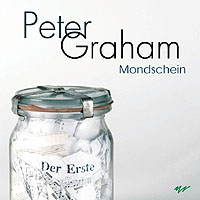ARTA classics

- Der Erste (chamber cantata on a German text by Franz Kafka, for female vocal, bass flute, bass clarinet, accordion, percussion and double bass -1993)
- Fragment II (for cello and piano -1998)
- Sextet - I. Impatience, II. Heart (for two string trios -1998)
- MOENS or "Dvorak problem" (for flute, clarinet, violin, viola, cello, synthesizer and piano -1998)
- Silent Music (for three clarinets -1990)
- Heaven and Earth Will Pass Away... (for chamber ensemble and tape -1997)
- The Last Eve Of Poet Si-Kchang - Secreta (for flute solo - 1973, for percussions - 1995) simultaneous performance
- Ave verum corpus (for vocals, clarinet and piano - 1990)
I was a bad pupil at music school. I even had to repeat my third year (for lack of diligence). Immediately after that, however, music began to fascinate me through rock'n'roll (Jerry Lee Lewis and Little Richard) and the Slitr songs. When I was twelve I heard a programme on the radio (where composer Pavel Blatny put together various musical curiosities) featuring a work by John Cage called Imaginary Landscape No.4 for twelve radio receivers. It changed my life. It was so different from any music I had ever heard and filled me with the notion that music can be made another way. Although I was still going through my rock phase, I began to take greater interest in New Music as a wide-open field for imagination, research and experimentation. During my first period (1971-1976) I was inclined towards graphic scores and concepts where emphasis was placed on the skeletal communication of the work's general aim which the players then developed in their own way. Later, as a pupil of Alois Pinos at JAMU (1976-1980), I turned my attention more to the internal structure of the composition, the treatment of detail and the balance of contrasts frequently derived from opposing styles. Since that time, while I have been using the advantages of conventional notation more frequently, it never has the character of dogma, but instead kerygma - where understanding the sense is more important than anxious adherence to the written symbols. I might compare this to the work of an actor who has to fully understand the situation first before he can offer the correct interpretation. Conversely, we could imagine some kind of subtle poetry being read "impeccably" by a television announcer.
 I greatly respect the "great musical tradition" (perhaps more than many of its die-hard adherents), but I still see in it only one of the possibilities of making music.
I greatly respect the "great musical tradition" (perhaps more than many of its die-hard adherents), but I still see in it only one of the possibilities of making music.
My music grows like trees in the forest: from all sides and from many roots. I treat each work individually, but whatever I do, everything else grows with it. I try to follow the course of vital energy with my music, how I feel it within myself and how I see it in the world around me. It is a constantly changing process, a continually moving current which is sometimes hidden, at other times it sets everything in motion. Sometimes it assumes an almost geometric form, at other times it spreads out into unpredictable figures. It might seem that it adheres to certain laws but never to such a degree that one could reliably foresee its outcome.
My music is still incalculable. I'm curious myself to see what surprises it will bring.
(taken from sleevenote by Peter Graham)